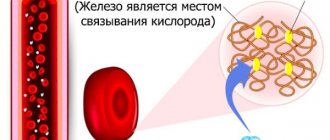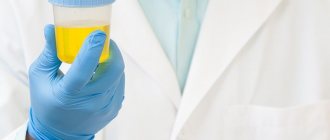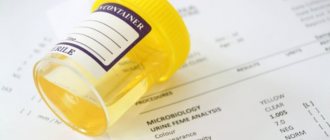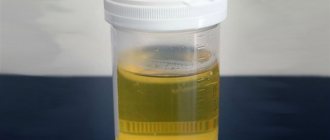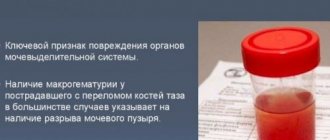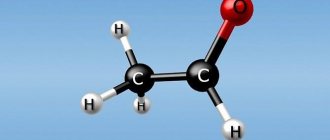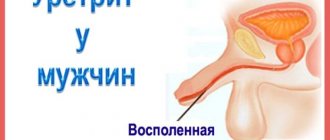One of the routine medical tests is a laboratory urine test.
. This technique is widely used due to the ease of collecting biomaterial and its information content. Urine testing can confirm or exclude a number of conditions and diseases. Thanks to the study of the analysis, it is possible not only to evaluate the functioning of the kidneys, but also the activity of the entire body, since urine is a waste product and bears the imprint of most processes in the body.
All substances whose levels are elevated in the body are excreted in the urine, which is what laboratory diagnostics are based on. A general urine test is prescribed to almost every patient and is one of the mandatory tests. There are other methods for studying biomaterial, which are most often prescribed for pathologies of the kidneys and excretory system. The peculiarity of urine analysis is that the technique is sensitive to changes in the body when there are no symptoms yet, which is important for making a diagnosis in the early stages.
Types of laboratory diagnostics of urine
There are different types of urine tests:
:
- general;
- according to Nechiporenko;
- urine protein test;
- microscopic examination;
- measuring glucosuria (glucose level in urine).
Go to analyzes
Depending on the pathology, one or another type of study is prescribed. A general urine test is indicated for any disease, as it is a general clinical research method that is routine. Urine tests must be assessed comprehensively, based on blood test data, instrumental research methods, and the general condition of the patient. If necessary, the analysis is prescribed over time. This is especially true for urological and nephrological patients. A urine test is of great importance for those who have undergone surgery and are undergoing detoxification. Regular checking of urine test data is important when assessing treatment and for its correction, if necessary.
Let's look at each technique in more detail.
General urine analysis
One of the main research methods used in medical practice. Based on the fact that urine is a complex solution of minerals, salts and organic substances. There are thousands of substances dissolved in water, which makes up most of urine. To a greater extent, urea and sodium chloride are excreted in the urine. Otherwise, even in healthy people, the composition of urine is constantly changing. The general analysis includes an assessment of transparency, acidity, and density. The amount of basic elements of sediment is studied - the level of protein, glucose, ketone bodies, blood cells, pigments.
A general urine test allows you to monitor and adjust treatment and provides comprehensive information about what processes are occurring in the body. It is quick to implement and does not require complex equipment, which is why it is widespread and often used.
A general urine test does not require special preparation. In urgent cases, collection is carried out, regardless of the patient’s preparation.
Urinalysis according to Nechiporenko
The technique was proposed by a specialist urologist, Nechiporenko A.Z. The peculiarity of the method is that the calculation of the studied parameters is carried out not in the field of view, as in a general analysis, but in a unit of urine. The technique is highly informative, does not require significant costs and time, is possible with a small amount of urine and does not require special preparation.
It is used as a clarification of the general analysis if it shows deviations. Some indicators are not thoroughly covered by the general analysis and more detailed research is required. It does not replace general analysis, but complements it. Widely used in urology, therapy, surgery and nephrology.
A urine test according to Nechiporenko is prescribed if traces of blood, leukocytes, and traces of protein are found in the general analysis. The technique is informative in the diagnosis and treatment of various diseases of the kidneys and urinary system. Using the analysis, the number of red blood cells, leukocytes, and cylinders changes. The composition of the cylinders and their structure are assessed.
Measuring protein levels in urine
The protein that is excreted from the body in urine is only traces of the total amount of protein that is filtered daily and reabsorbed back into the kidney structures. Sometimes, protein increases based on functional changes, even in healthy people. This is observed with changes in blood circulation indicators, acute diseases, and temperature changes. Functional proteinuria disappears simultaneously with the cause that caused it.
Proteinuria - the content of protein in the urine, indicates a decrease in the normal function of the kidneys to retain protein in the body. This may be increased filtration or decreased reabsorption. Also, protein may initially be elevated in the body, and its excess is excreted in the urine.
Microscopic urine analysis
This method allows you to study organized and unorganized urine sediment, assess the quantity and quality of cylinders. We are talking about more than ten indicators. Epithelial cells and cylinders, blood cells, are taken into account. From unorganized sediment, the level of salts, ions, and minerals is measured. Most often, the level of urates, phosphates and oxalates is studied. An increase in these indicators may indicate serious metabolic disorders and diseases.
By cylinders we mean casts of the urinary tract, which are formed from various substances - hyaline, red blood cells, epithelium. They form in the renal tubules and indicate problems with the functioning of the kidneys, as well as general changes in the body.
Assessing urine glucose levels
Normally, urine contains a low concentration of glucose. It is not detected using standard research methods, therefore the norms of indicators correspond to the absence of glucose in the urine. If glucose is detected in urine, it is called glycosuria. Most often, this is associated with an increase in glucose in the body (hyperglycemia). It’s not scary if glucose increases with high carbohydrate consumption or taking certain medications. It happens that glucose in the blood is at a normal level, but its concentration in the urine is increased - this happens in some pathologies, during gestation. The consumption of carbohydrates and the volume of urine excreted from the body per day must be taken into account; this makes the analysis more objective.
Exceptions to the rule
Protein in urine in men
may appear not due to illness. His hot flashes can be caused by three factors.
Firstly, nutrition. If on the eve of the analysis a man ate a lot of meat or other protein-rich food (raw eggs, dairy products, soy, cottage cheese), the analysis will be distorted, but exceeding the norm will not be critical.
Secondly, sports. Active physical activity, such as lifting weights, running, or physical work, especially without prior preparation, causes muscles to tense and lactic acid is produced in them. Lactic acid is neutralized by protein, and the kidneys begin to actively produce it.
Thirdly, stress and hypothermia. Both of these factors provoke a sharp release of protein.
Protein in the urine of men can also be a sign of age. During puberty, its amount is always increased, and this is the norm. If after the test your doctor suggests one of these reasons, then it is better to take the test again a few days later.
The main properties of urine and pathologies in which they change
The main indicators of urine include:
- amount of daily urine;
- color;
- transparency;
- smell;
- acidity;
- specific gravity.
Let's take a closer look at these indicators.
Volume
Normally, the volume of a urine portion is 100-300 ml. A low amount of urine volume indicates kidney failure and dehydration. Polyuria is an increase in urine volume, which may indicate the presence of diabetes, pyelonephritis and other conditions. There is oliguria - the daily amount of urine is up to 500 ml. It occurs with pathologies of the heart and kidneys. There is also anuria - the daily amount of urine is up to 200 ml. This is a serious condition that occurs in cancer, meningitis, and acute kidney failure.
In addition to the volume of urine, the nature of urination is assessed. This may be a predominance of nighttime diuresis over daytime, although normally it should be the other way around. Deviations include small and frequent portions of urine, painful urination, involuntary acts and false urges. It is necessary to evaluate these indicators comprehensively, because they form a complete clinical picture.
Color
Normal urine is straw-yellow in color. You can tell a lot by the color change. For example, the orange tint is given by bile pigments, which increase in the urine with hepatitis, cirrhosis, and bile outflow disorders. Red color is observed when there is an increase in red blood cells in the urine. This accompanies pyelonephritis, the passage of kidney stones, cancer, tuberculosis. A greenish-white color is observed when interspersed with pus. Black urine occurs due to poisoning. intoxications. Urine may be brown, it is also compared to the color of beer - this occurs due to disturbances in the exchange of bile pigments, dehydration, and the consumption of certain foods and chemicals.
The color of urine may change depending on food and medications. Normal color does not exclude changes and pathology, but a violation of this indicator clearly indicates a problem.
Smell
Under some conditions, urine changes its odor. For example, when it is inflamed, it smells like ammonia. Diabetic patients experience a slight odor of acetone. The normal smell of urine is specific, but not sharp, without additional shades. This indicator is not specific and is not widely used. Rather, this is an indicator that can alert the patient and serve as a reason to consult a doctor.
Availability of foam
There should be no foam in the urine. It can appear with jaundice, increased protein levels, diabetes and other metabolic disorders.
Transparency
Normally, urine should be clear. It becomes cloudy if it contains admixtures of pus, salts, a large amount of mucus or formed elements. This is observed in infectious diseases. In laboratory conditions, various reagents are used and they study which one will make urine clear. For this purpose, acids, alcohol, and heat are used. The effectiveness of a particular method indicates what caused the cloudy urine.
Density
An increase in the indicator indicates a decrease in water in the body, and a decrease indicates kidney pathology. The norm is 1018-1025 units. The density level is affected by the amount of protein, glucose, sediment, and the presence of bacteria. Low density is observed in diabetes, renal failure, hypertension, and the use of diuretics. High density is observed with various intoxications and edema.
Acidity of urine
The normal urine pH is 5-7, that is, slightly acidic or neutral. A more acidic environment is observed with tuberculosis, nephritis, gout, and acidotic changes in the body. Also, acidic urine is observed with increased consumption of animal proteins and certain medications.
An alkaline reaction accompanies a high amount of vegetables in the diet, consumption of alkaline mineral waters, hyperkalemia, alkalosis, and inflammatory diseases.
Protein in urine, symptoms and treatment
The disease is often accompanied by unpleasant symptoms. Most often proteinuria can be accompanied by:
- unpleasant odor and change in color of urine
- fever and chills
- dizziness and drowsiness
- nausea and vomiting
- aching bones
- loss of appetite
- fast fatiguability
An increase in the number of protein molecules, due to the characteristics of the body, is considered a temporary phenomenon. These indicators are able to normalize on their own after some time. Pathological proteinuria of the three degrees listed above requires treatment. If abnormal protein levels are detected, a mandatory diagnostic examination is indicated: laboratory tests of blood and urine. For the purpose of therapy, anti-inflammatory and decongestant drugs, antibiotics, antihypertensive drugs, drugs that reduce blood clotting, and glucocorticosteroids are traditionally used. Additionally, the patient may be advised to rest and go to bed. It is strongly recommended not to get too cold. During treatment and during the rehabilitation period, excessive physical activity and nervous strain should be avoided.
How to prepare for diagnosis
The morning urine sample is used for the study. It is necessary to thoroughly clean the external genitalia, as this makes the diagnosis more accurate. Urine is not collected during menstruation. The day before, it is necessary to limit the consumption of vegetables and fruits that have bright colors. In the evening you should not eat spicy marinades, sauces, smoked meats, or honey. Also, it is worth limiting the use of certain medications. Please consult your doctor about this in advance. Before collecting urine, it is advisable to avoid strenuous physical activity. Limit your consumption of alcohol, strong tea, and coffee.
How to properly collect material for research?
After appropriate preparation, urine is collected in dry, sterile containers. To do this, you need to use a special container intended for one-time use. It is better not to collect the first portion of urine, as it may contain traces of urine from the external genitalia. It is better to start collecting with a clean, second portion of urine. The container should not touch the body while collecting material. It is better to stop collecting until the end of the act of urination. After collecting the required portion, the container is tightly closed with a lid.
Please note that urine collection must be carried out shortly before the test. Do not store the container for longer than 2 hours and keep it in a cool place.
24-hour urine collection
If you have been prescribed a 24-hour urine collection, follow your normal lifestyle and drinking routine. The first morning portion is poured out, and the rest of the urine is collected throughout the day. It is necessary to collect in a container with a wide neck and sufficient volume. All the time during the day, the dishes should be kept in a cool place, but they should not be allowed to freeze. The start and end times of collection must coincide.
Analysis according to Nechiporenko
For analysis, it is necessary to collect an average portion of the first morning urine. During urination, a man must pull back the fold of skin over the penis and release the opening of the urethra. Women need to spread their labia.
The beginning of urination occurs in the first channel, the next portion is collected in the second, and the last in the third. The second portion should prevail in volume.
Analysis for bacteriological research
The collection is carried out in the morning, after a thorough toilet of the genitals. The second, middle portion is collected.
The general rules for any analysis are clean, dry glassware, proper storage conditions and prompt delivery to the laboratory.
The importance of diet and advice from traditional healers
In most cases, the important point is to prescribe a diet. Doctors recommend eliminating, and at the end of treatment significantly limiting, the consumption of fish and meat. Instead, the diet should include dairy products, steamed rice dishes, fruits and vegetables, and dried fruits. The daily volume of liquid drunk should not be more than 1 liter. It includes first courses, fruit drinks, compotes. Strong tea and coffee are excluded. Traditional medicine recommends taking such decoctions and products as cranberry juice, decoctions of linden, rowan and juniper, infusions of birch and golden mustache buds, corn grains, oats, parsley roots and seeds, lingonberries, pumpkin seeds (not raw), most herbal preparations. Folk remedies should be used simultaneously with medications or in between. Simple recipes will help shorten the duration of treatment and bring significant relief. Recipe No. 1 Grind a teaspoon of parsley seeds to a powder consistency, pour 250 ml of boiling water and leave for several hours. Should be taken in small doses throughout the day. Recipe No. 2 Four tablespoons of corn grains are poured into 500 ml of boiling water and placed on low heat. When the grains become soft, filter the broth and drink a little after eating. Every day it must be prepared anew and taken fresh. Recipe No. 3: Pour 20 g of crushed lingonberry leaves into a glass of boiling water and leave for half an hour. The strained infusion should be taken up to 3 times a day in the amount of 1 tablespoon. Recipe No. 4 A tablespoon of crushed bearberry is brewed with three glasses of boiling water and kept on low heat for at least 30 minutes. Strain and take several times a day in small portions. Decoctions and infusions must be consumed for at least two weeks. Before using any traditional medicine, you should obtain the approval of your doctor. In order to maintain health, it is important not to let the disease progress and not to self-medicate. Only a specialist can determine the true causes of proteinuria and prescribe effective therapy.
